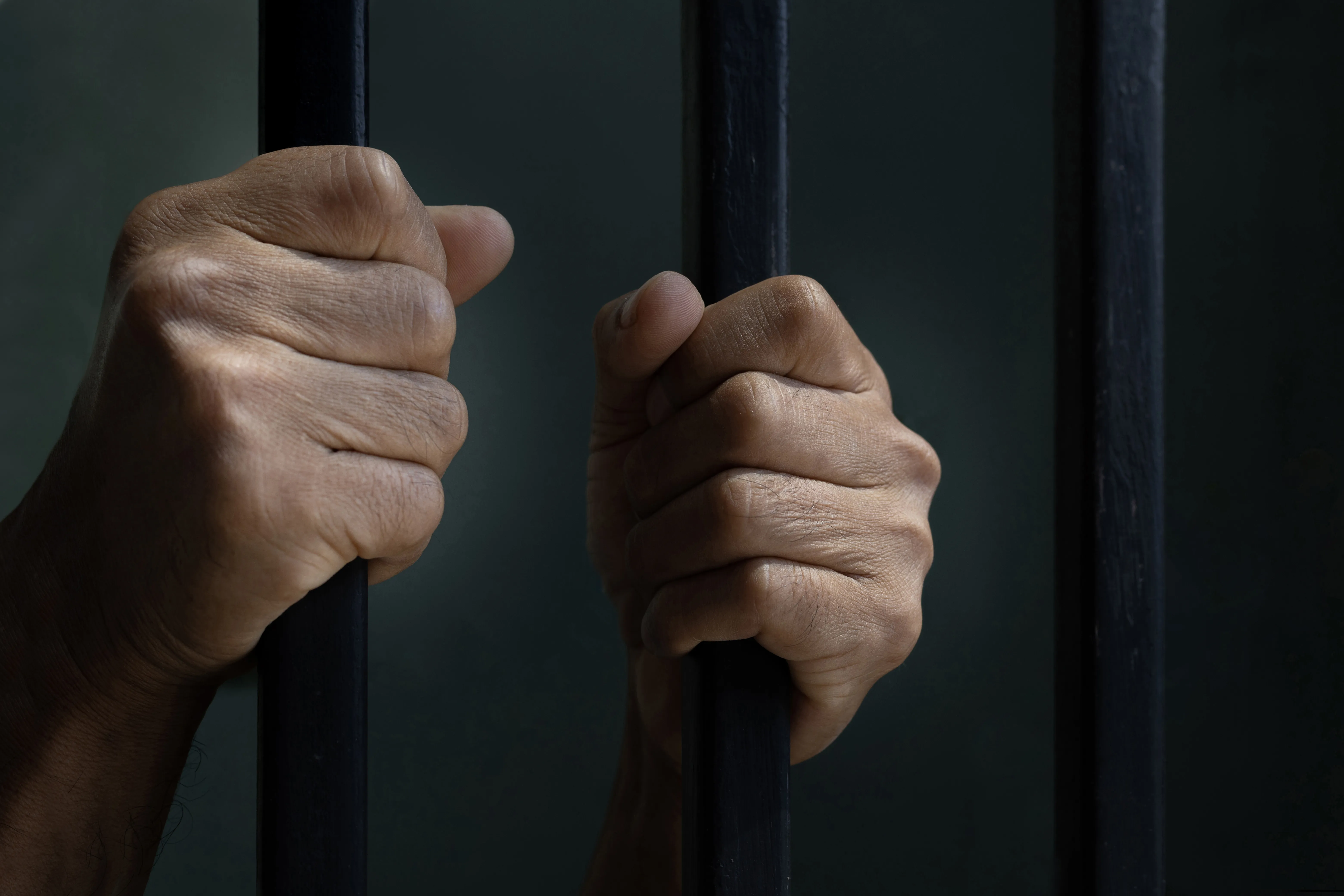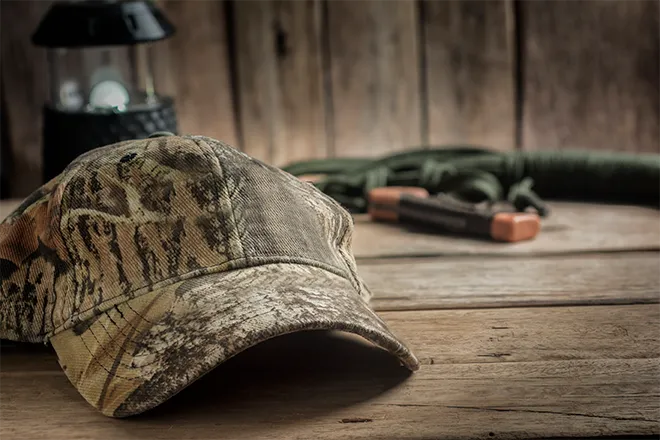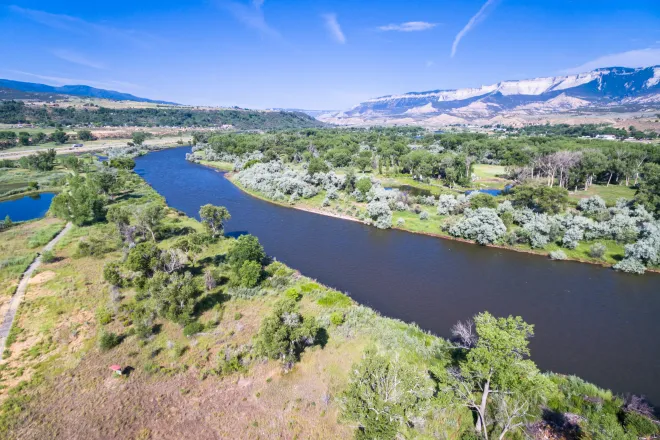
Are religious communities reviving the revival? In the US, outdoor worship has a long tradition
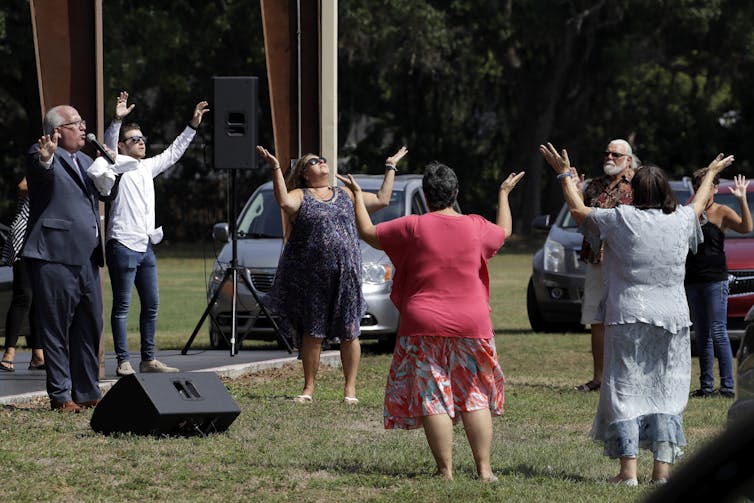
Jeffrey Wheatley, Iowa State University
Religious communities have been forced to find alternative ways to worship together during the coronavirus pandemic. For some that has meant going online, but others have turned to a distinctly non-digital practice steeped in this history of the American religious experience: outdoor worship.
Prayer sessions in parking lots and services in green spaces formed part of an improvised response to the lockdown by religious leaders and they may now be part of the plan as the United States emerges from the crisis. Indeed, a team of clergy and scientists have issued a new guide suggesting, among other recommendations, that baptisms could take place in “flowing streams, lakes or in beach settings.”
So are brick-and-mortar houses of worship essential?
It is a question that states and courts, including the U.S. Supreme Court, have asked in considering the extent to which states can or should place restrictions on meetings in religious buildings.
Religious communities, too, have reflected on whether the terms “church,” “mosque,” “temple” or “synagogue” describe a building or a community – it is as much a religious question as a legal one. The responses to this question vary between traditions, communities and individuals.
The history of outdoor worship in the United States reveals a diversity of understandings of the proper place of worship. As a scholar of American religious history, I believe it also reveals an irony: While white evangelical Protestants have been some of the more vocal protesters of government restrictions on houses of worship during the pandemic, they actually have a long history of embracing outdoor worship.
Observing outside
A variety of American religious communities in the 18th and 19th centuries made do without physical houses of worship. They turned to alternative spaces for worship out of necessity – due to lack of institutional support and issues of religious freedom – or even preference.
Protestant communities were chief among the groups who considered making do without a physical church. Protestantism emerged in the 16th-century Reformation in part as a protest against some of the more formal aspects of the Roman Catholic Church, such as elaborate buildings, holy objects and even regular access to religious authority figures. As such, Protestants in this period were theologically more open to holding services outside of churches.
The emergence of evangelical forms of worship in the 18th and 19th centuries included outdoor revival meetings, which Protestant groups such as the Methodists, Baptists and Shakers helped popularize. Revivals included spontaneous preaching, hymns, displays of emotion and an emphasis on conversion. Large crowds met for days at a time at outdoor sites like the one at Cane Ridge, Kentucky, where thousands congregated in 1801. Though not the first, the Cane Ridge Revival signaled the emerging popularity of evangelical outdoor services in the 19th century.
Historian Brett Grainger has argued that evangelicals, through revivalism, formed a mystical relationship with nature. For white settlers in America, hosting revivals in frontier spaces was also a way of sanctifying the colonization of land held by indigenous peoples, who have their own intricate relationships with nature and outdoor worship.
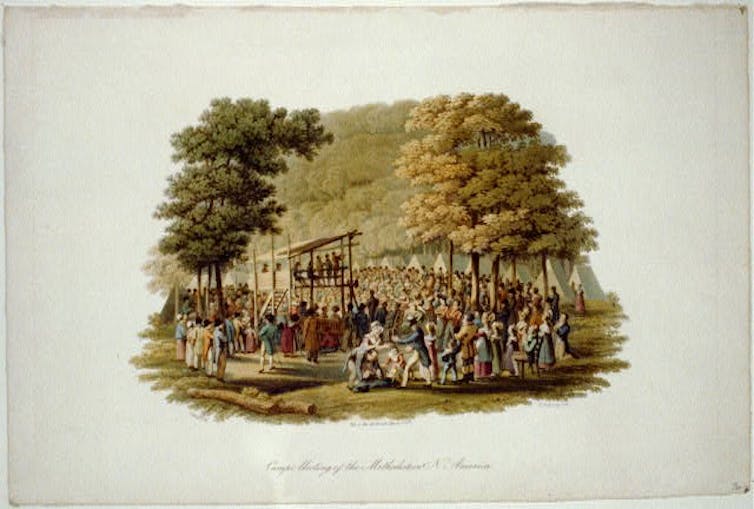
Enslaved black people, too, embraced forms of outdoor worship. Some met in what were called “hush harbors,” or secret meetings held outside of established churches. In these meetings, as scholar of religion Albert Raboteau has examined, black people could partake in Christian and African-derived worship practices apart from white surveillance and pro-slavery Christianity. The outdoors provided a refuge.
Meanwhile, 19th-century white transcendentalists such as Margaret Fuller, Ralph Waldo Emerson and Henry David Thoreau emphasized nature as a site of devotional reflection to discern the reality of the divine. Emerson wrote in his essay “Nature” that: “The aspect of nature is devout. Like the figure of Jesus, she stands with bended head, and hands folded upon the breast. The happiest man is he who learns from nature the lesson of worship.”
They sought to transcend their individual selves into a greater universal being. This required not churches but the experience and appreciation of nature.
Parking lot prayers
During the pandemic, different religious communities responded differently to the restrictions on indoor worship and the possible alternative of hosting events outdoors.
The emphasis on ritual prayer in the Islamic tradition comes with a degree of flexibility for the safety and convenience of pious Muslims. A statement by the National Muslim Task Force on COVID-19, for example, considers recommendations from the Centers of Disease Control and Prevention, local laws and Islamic moral tradition in asking Muslims to use caution and discernment in how they meet to pray. Where practical, the statement suggests that communities use mosque grounds or parking lots for Friday prayers.
Most Jewish denominations have emphasized the need to keep synagogue buildings closed. Instead, many Jews have turned to virtual or outdoor worship services. Some Hasidic Jews have debated the permissibility of this and even questioned the scale of the threat of COVID-19, as have a minority in all faiths.
In-person services play an important role in the Catholic tradition. Some Catholic leaders, such as Cardinal Raymond Burke have pushed for churches to remain open. Nonetheless, Pope Francis has urged churches to take precautions and follow the recommendations and mandates of local governments. Priests have had to adapt and find ways to bring the sacraments to parishioners outside of the church.
Nave or nature?
If any group’s theologies and histories suggest an adaptability to the present situation, Protestants would be high up there. Some Protestant communities today affirm outdoor worship as a positive good. For example, the Wild Church Network comprises Christians who “question the wisdom and consequences of regarding ‘church’ as a building where you gather away from the rest of the world for a couple hours on Sundays.” Nature, more than the inside of a building, is a proper space for Christian devotion for this network.
Evangelical Protestants have been among those who have defied government shutdowns of houses of worship. As scholar of religion Pamela Klassen has argued, the resistance is especially evident in the United States, where conservative religious groups have long developed suspicions to government authorities and modern science, especially when it concerns public health.
But as the history of outdoor worship in the United States shows, adapting religious services to an outdoor setting is not uncommon. Historically, religious communities have long contested the essentialness of brick-and-mortar houses of worship.
[You’re smart and curious about the world. So are The Conversation’s authors and editors. You can read us daily by subscribing to our newsletter.]![]()
Jeffrey Wheatley, Instructor, of Philosophy & Religious Studies, Iowa State University
This article is republished from The Conversation under a Creative Commons license. Read the original article.







